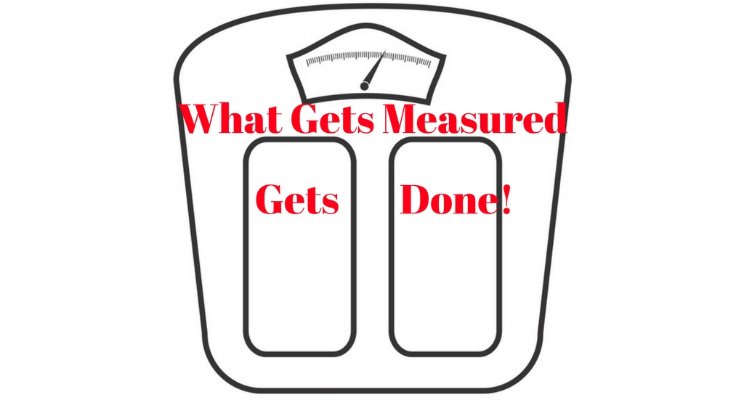What gets measured gets done! Do you believe that? How many of your friends wear a Fitbit step tracking device (or something similar)? Do they walk more than they have in the past? Chances are they do! Because of its popularity, the wearable healthcare market is expected to be a $41 billion market by 2020. As I’m cycling, when I see my average miles per hour go down, I pick up my pace. Numbers motivate. Same thing goes for business. If you want a specific activity from your team, measure it!
This is the second article of a 3-part series in Infrastructure. I’ll focus on Incentives in this article as part of this formula:
Infrastructure = Functional Structure + Incentives + Tools (FIT)
Incentives in this formula deals with anything with numbers; whether they are metrics, compensation structures, or goals.
Do You Really Know . . . If Not Measured?
Ronald Reagan was quoted for saying, “Trust but verify.” Numbers help verify activity. Ever heard, “People respect what you inspect”? I asked my client how profitable they are and she said “somewhat profitable” (Scenario A). Then I followed up with “do you know which services are the most profitable?” She couldn’t answer. Then I asked if she knew if she’s making profit on all her services. She said “oh yeah, definitely . . . I hope so”. She didn’t sound too confident. She has since broken down her profitability by service line and now has each division focused on their own respective profitability. They are now hitting record profitability and thinking of reducing their service lines to their most profitable, thereby increasing their resources to devote to their Core Focus (or Hedgehog concept in Jim Collin’s terms).
Another client of mine (Scenario B) was always worried about future work and whether or not they had enough in the pipeline. He measured # of new projects closed but it still didn’t give him comfort on how long that would last in terms of revenue (some projects were big and some were small). We started measuring backlog which represented the dollar amount of work that still needed to be billed as work is completed. He determined that X dollars represented Y months of work. When he sees that metric go down, it means he only has Y months of work so it creates activity to close more projects.
Metrics Impact Behavior
Scenario A above is an example of first understanding the “Brutal Facts of Reality” by first measuring what’s truly going on. Then you apply goals to develop the right Incentives to reach the desired results . . . profitable service lines in this example.
Scenario B above is an example of having the right metrics to drive the right behavior (driven by Incentives). Merely measuring the # of new projects doesn’t produce the results wanted . . . Y months of work in this example.
Having the right metrics, goals or compensation structures (Incentives) help drive the right behavior. To affect behavior, you must review these Scorecard metrics weekly, monthly and quarterly. Doing so will give you a good pulse of the organization and allow you to make informed decisions, instead of going by emotion.
Healthy Business Vitals
Imagine your business with good, solid data and incentive structures that drive the best decisions. You have a good pulse of the organization and you know your business vitals, giving you the ability to predict and manage by objective data instead of emotion. Everyone on your team knows what they are being measured against, driving peak performance. Everyone is being compensated more than fairly because everyone is aligned and maximizing profits. There is no drama in the office since decisions are made objectively and issues are resolved with the backing of data. What would that do to the health of your company? For your own well-being?
How healthy is your Infrastructure when it comes to Incentives (or anything that deals with numbers)? Is it supporting your people and processes or setting them up for failure?
If you’re new to metrics, start with basic metrics: ones that already exist and they’re easy to collect. It will start shedding light on parts of your business towards more objectivity. Focus on 3 key metrics: productivity, risk/quality, and financial. Productivity measures activity (whether sales or operations). Risk/Quality measures the risk you’re taking or the quality of your service (examples include aging accounts receivable for risk, and rework for quality). Financial measures revenue or profit (could be company-wide or per service line or per employee). This will give you a balanced look at your business.
Remember what gets measured gets done!
Take the Organizational Checkup to gauge the health of your company! For more information on creating a healthy business lifestyle, read about the Entrepreneurial Operating System (EOS).
My next blog will be about the third element of Infrastructure – Tools. Tools can either hinder or support People and Process!
To Your Business Health!


